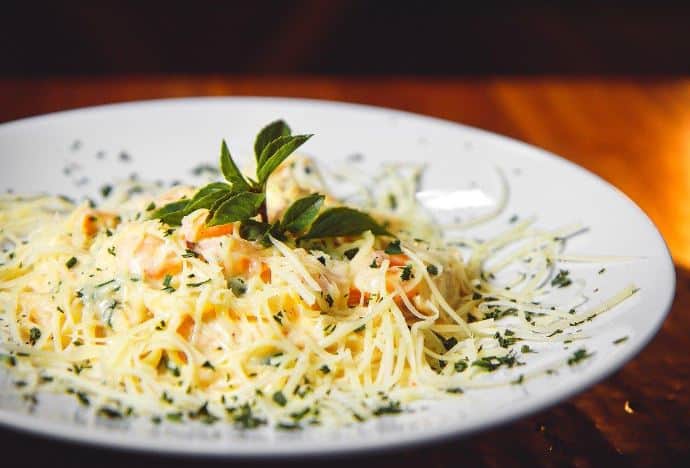Rome, the eternal city, is not only famous for its ancient history and magnificent architecture but also for its rich culinary heritage. At the heart of Roman cuisine lies pasta—prepared in a myriad of traditional ways that reflect both history and local preferences. From creamy classics to robust sauces, here’s a journey through the most well-known of Rome’s many iconic pasta dishes, which every food lover must experience at least once.
1. Cacio e Pepe
Let’s begin with simplicity at its finest: Cacio e Pepe. This beloved Roman dish features spaghetti or tonnarelli (a thicker spaghetti-like pasta) tossed with Pecorino Romano cheese and freshly ground black pepper. The key lies in achieving a creamy sauce by emulsifying the cheese and pasta water. The recipe is a testament to the Romans’ mastery of few ingredients to deliver maximum flavor.
2. Carbonara
Carbonara is another simple yet quintessential Roman pasta dish known worldwide. Made with spaghetti, guanciale (cured pork cheek), eggs, Pecorino Romano cheese, and black pepper, Carbonara is a creamy and indulgent treat. The hot pasta cooks the egg mixture just enough to create a silky sauce that clings to every strand—a true comfort food experience.
3. Amatriciana
Hailing from the nearby town of Amatrice but embraced wholeheartedly in Rome, Pasta all’Amatriciana is a robust dish featuring bucatini (hollow spaghetti), a sauce of tomatoes, guanciale (or sometimes pancetta), Pecorino Romano cheese, and chili pepper. The tangy tomato sauce paired with the salty pork and sharp cheese creates a harmonious balance of flavors.
4. Gricia
Often considered the ancestor of Carbonara, Pasta alla Gricia is a simpler yet equally satisfying dish. It consists of guanciale, Pecorino Romano cheese, black pepper, and pasta (typically rigatoni or spaghetti). The absence of eggs distinguishes Gricia from Carbonara, allowing the flavors of the pork and cheese to shine through.
5. Pasta e Ceci
Moving beyond meat-centric dishes, Pasta e Ceci (pasta with chickpeas) is a hearty and nourishing Roman classic. It combines short pasta (such as ditalini or mezze maniche) with a broth-like sauce of chickpeas, tomatoes, garlic, rosemary, and sometimes anchovies. Finished with a drizzle of olive oil and grated Pecorino Romano cheese, this dish is both comforting and satisfying.
6. Rigatoni alla Pajata
For those with an adventurous palate, Rigatoni alla Pajata represents a unique and surprising Roman delicacy. Pajata is a dish made from the intestines of a milk-fed calf, cooked in a tomato sauce until tender. The resulting sauce is rich and creamy, traditionally served with rigatoni to capture every bit of flavor.
7. Pasta alla Gricia con Fave e Guanciale
Combining the flavors of Gricia with the addition of fresh fava beans, this dish celebrates the seasonal bounty of spring. The sweetness of the fava beans complements the salty guanciale and Pecorino Romano cheese, creating a delightful variation of the classic Pasta alla Gricia.
8. Spaghetti ai Frutti di Mare
As Rome is not far from the Mediterranean coast, Spaghetti ai Frutti di Mare (seafood pasta) is a popular choice for seafood lovers. It features spaghetti tossed with a medley of fresh seafood such as clams, mussels, shrimp, and calamari, in a light tomato or white wine sauce infused with garlic and parsley.
9. Tonnarelli Cacio e Pepe con Tartufo
During truffle season (autumn to winter), Romans indulge in a luxurious variation of Cacio e Pepe by adding freshly shaved black truffles. The earthy aroma of truffles enhances the creamy cheesiness of the dish, creating a decadent yet simple pasta experience.
10. Lasagna alla Bolognese
Though traditionally associated with Bologna, Lasagna alla Bolognese has also found its place on Roman tables. Layers of flat pasta sheets are interspersed with a rich Bolognese sauce made from
ground meat, tomatoes, and bechamel sauce, then baked to perfection. It’s a hearty dish that’s perfect for sharing among friends and family.
Exploring Rome through its traditional pasta dishes is not just about eating—it’s about delving into the city’s culinary history and cultural identity. Whether you prefer the creamy allure of pasta alla Carbonara or the robust flavors of Amatriciana, each dish tells a story of Roman life and tradition. So, next time you find yourself in the eternal city, don’t miss the opportunity to savor these iconic pasta dishes—it’s an experience that will leave you craving more of Rome’s culinary delights.

